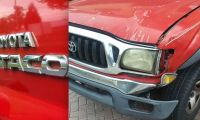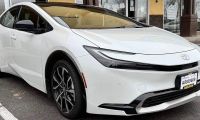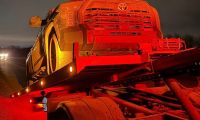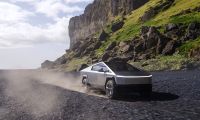Project100, a Las Vegas project meant to revitalize that cities' transportation system, is getting ready to launch a car sharing program utilizing 100 Tesla Model S's. The deal marks the single largest "reservation" of Tesla Model S's in the history of that car, and almost certainly the first use of the Model S in a car sharing system.
Project100, a subproject of the Downtown Project, aims to build "a complete transportation system" designed to help people get rid of their cars and be more connected to their local neighborhood. The goal of the system is "on-demand cars with drivers, shared cars you can drive yourself, bikesharing, shuttle buses and more." In other words, it's a combination of Lyft, Zipcar, Vélib', Ridepal, and other similar systems. A key is to use mobile smart phone technology to integrate multiple transportation modes into one app.
Because the Model S is so expensive one might wonder about the wisdom of buying so many for a car sharing service. Why not buy a less expensive car, and use the funding to build out a larger network of cars? They chose the Tesla Model S because it's "a big computer on wheels" that they hope to customize "the member experience over time and test a lot of theories about how people use vehicles." They met with the Tesla engineering team see "the right long-term partner." That the Model S has such an excellent driving range, could make that car more feasible in a car sharing service than the 100ish mile range electric cars.
The Tesla's won't be the only cars in the system, but it will include other sorts of vehicles as well. For example the projects' website asks whether a Model S is the correct car for someone to travel 7 blocks to the grocery store. Wouldn't, they ask, "a low-range Polaris GEM a better vehicle for quick trips?" Their answer is that the typical NEV is great for a short trip around the neighborhood, while a full size sedan is better suited for a trip across town or even outside town.
The end goal is a membership program that will give members a smart phone app that presents a comprehensive list of transportation options any time they want to go from A to B. There are several disconnected transportation system options now, such as car or bicycle sharing programs, ride-sharing, city transit systems, or taxi systems. Many of those systems even have smart phone applications, but no one existing service can offer options like this:- "1 – Be picked up by a driver in a Tesla in 3 minutes, 2 – Drive yourself in a low range electric vehicle that’s 0.2 miles away, 3 – Grab a bike that’s 0.1 miles away or 4 – Hop on the party bus that will be near you in 4 minutes."
Some of the technology behind this comes from Local Motion, a start-up who is developing a mobility-as-a-service software system and also had developed a lightweight neighborhood electric vehicle.
The Downtown Project was started by Zappos CEO Tony Hsieh, and is focused on "transforming Downtown Las Vegas into the most community-focused large city in the world." As Hsieh said at the VERGE SF conference last fall, Downtown Las Vegas is not the Strip, it's more like the anti-Strip, and it's like a hidden thing that only locals know about. The Downtown Project is an investment fund aiming to improve the local community infrastructure in Downtown Las Vegas.
“We are excited to be partnering with Downtown Project and Project 100. I am a big fan of their innovative efforts to help revitalize and transform downtown Vegas,” said Tesla CEO Elon Musk.











